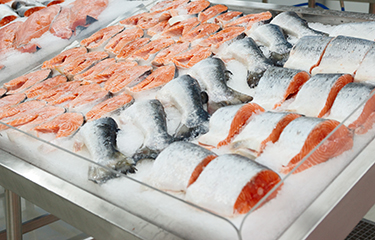The David and Lucille Packard Foundation has published the sixth edition of its “Progress Towards Sustainable Seafood – By the Numbers” report, assessing the impact of global sustainable seafood initiatives as a new decade begins.
First published in 2008, the June 2020 report is intended, like its predecessors, to track and monitor the effects of sustainable seafood initiatives, according to the foundation. This latest report, which is hosted on the Our Shared Seas website, focuses on six different areas in its analysis: the water, specifically stock and management trends; producer-level progress, including certification, fishery improvement projects (FIPs) and human well-being focused programs; consumption and trade dynamics; business relationships and supply chain engagement; conditions for business change, which entails fraud and mislabeling, as well as traceability and transparency; and policy change.
While a number of challenges continue to face the seafood industry in the realm of sustainability, the new report notes that the sector’s efforts to improve management of production and supply chains have been effective. Even though roughly half of global marine catch comes from fisheries without stock assessment data, management trends in biomass and fishing pressure have been improving U.S. management since the reauthorization of the Magnuson-Stevens Act in 2006, the report found.
Along with highlighting the correlation between good management and healthy, economically-valuable fisheries, the report also asserts that governments are creating sustainability challenges by subsidizing most high-seas fishing. The large distant-water fishing countries, including China, Taiwan, South Korea, and Spain, all subsidize their fleets.
As far as specific species are concerned, the report discovered that tuna fisheries – with the support of the seafood industry through organizations like the International Seafood Sustainability Foundation, OPAGAC, and The Global Tuna Alliance – have seen improving management, with ISSF reporting that 84 percent of global tuna catch comes from healthy stocks. However, while progress is being made, obstacles remain, including a lack of harvest strategies in some RFMOs, the report noted.
The report also identified that while close to half of seafood comes from small-scale fisheries, the present landscape of market-based tools has not effectively engaged this sector. The seafood industry has started to turn its attentions to this sector now, the report added, citing the Seafood MAP program launched by GSSI – a public-private partnership that includes over 90 stakeholder groups predominantly from industry – which aims to help bring small-scale fisheries into the global sustainable seafood marketplace.
Overall, roughly 25 percent of global seafood production is certified by the Marine Stewardship Council (MSC) or Aquaculture Steward Council (ASC), or green-rated by the Monterey Bay Aquarium Seafood Watch program, according to the Packard report. The number of fisheries that are MSC-certified or in a FIP with the intentions to achieve certification continues to grow, the report stated. It also noted that the volume associated with MSC certification and assessment is growing. But the volume of FIPs actually dropped in 2019, the report found – a dip attributed to more accurate reporting data.
Packard analysts pointed to the certification of over half of fishmeal and fishoil through the IFFO Global Standard for Responsible Supply, which is now called MarinTrust, as a big step forward in aquaculture. The program has certified 74 sites in 16 countries. The Best Aquaculture Practices has seen a similar rise in certifications, with BAP-approved farms growing by 60 percent between 2016 and 2019.
The Packard report also found that the quantity of global seafood trade continues to grow, with Asia increasing its consumption and influence on global markets. Sustainable efforts in Asia have increased as has influence, the report noted, with initiative such as Seafood Legacy and Seabos working with the Japanese industry, for example, to design sustainability programs that fit with the industry’s culture and the interest of buyers and consumers dealing in country’s market.
The number of commitments by seafood companies has slowed in recent years, the report said, but there is still a significant number of companies with commitments to sustainable seafood. Often progress around these commitments is difficult to track, so the emergence of projects like the Ocean Disclosure Project, where companies publicly report on their seafood procurement, offers a space for participating businesses to make clear their pledges to transparency and to making seafood more sustainable. Global Fishing Watch is another example of increased transparency in seafood – the initiative tracks 65,000 of the industry’s largest vessels.
In the policy arena, the report noted that 66 countries have ratified the Port State Measures Agreement, which moves the agreement into its implementation phase. While this is a huge step forward in the fight against IUU fishing, implementation remains difficult, the report said – as is the case with many governance responses. Though governments ratify the agreement, the report urged that the seafood industry still has a roll to play in encouraging more countries to ratify, pushing for effective implementation, and giving preference to countries that have ratified the agreement.
Photo courtesy of Kondor83/Shutterstock







